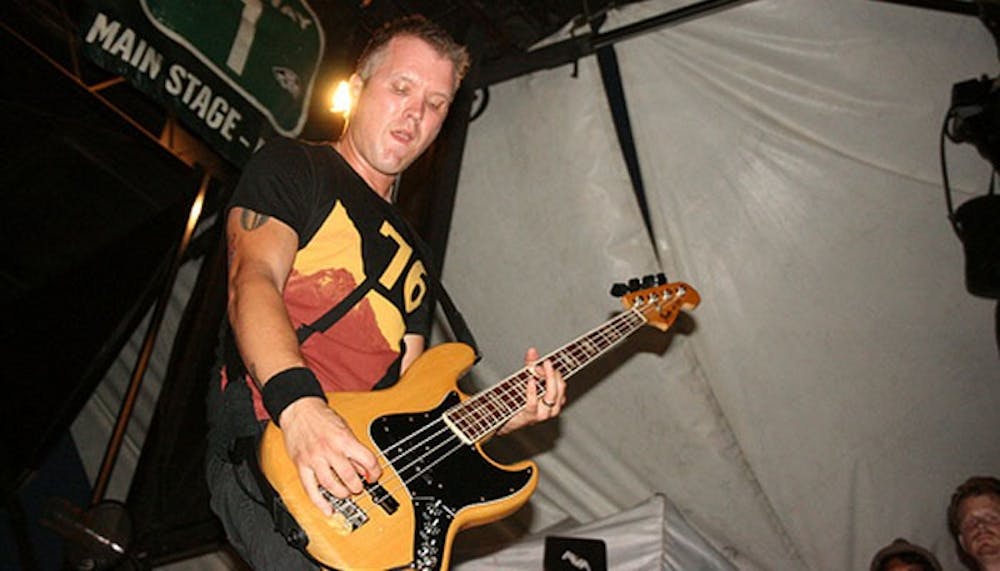Four hundred and sixty movie theaters across the nation were silent as the houselights dimmed and anxious fans held their breath in anticipation for the one night premiere of William Eubank and Tom DeLonge’s “science fiction” film, “LOVE.”
To classify “LOVE” as a basic feature film would be a dramatic understatement. What many individuals might not realize is that Eubank’s film is just one critical component of the multimedia experience developed by the American alternative rock band Angels and Airwaves.
Recently, the band released a long-awaited “gold package” containing not only the film “LOVE,” but also the dual albums “LOVE: Part I & II.”
Angels and Airwaves has described their group as more than a simple band, but “an art project that approaches larger human themes and tackles them on different mediums.”
Beginning with the release of their album “LOVE: Part I” in 2010, the band has devoted itself persistently to the pursuit of establishing a deep emotional connection with fans, intertwining lyrical melodies with concepts of life, love and the significance of human relationships.
In the summer of 2011, after five years of filming “LOVE,” DeLonge and Eubank, alongside upcoming actor Gunner Wright, brought their artistic collaboration to the big screen with only a $50,000 budget.
The basic plot of “LOVE” embellishes on the story of an astronaut, Lee Miller, who becomes stranded in solitude after losing all contact with Earth during a routine mission. From this climactic point onward, the film portrays Miller’s attempt to maintain his sanity and fill the void from the loss of human connection.
With the incorporation of an awe-inspiring synthesized soundtrack composed by Angels and Airwaves, the musical accompaniment brilliantly compliments the equally breathtaking visual effects produced within the film.
From the very first song on the soundtrack and their newest album, “LOVE Part II,” the stunning score goes above and beyond, giving the audience an audible impression comparable to an orchestra performance.
As the film progresses, the emotional tone of the soundtrack matures and develops with the personal growth and struggles experienced by the film’s protagonist, allowing fans to fully delve into an emotional connection of empathy concerning Miller’s confrontation with some truly outstanding obstacles
While the soundtrack itself transitions from track to track, the fans experience a combination of brilliant lyrics and fluent musical interludes, creating one cohesive stream of songs, a melodic approach unique to the band.
Right from the start, fans receive an incredible soundtrack-worthy experience starting with “Saturday Love,” a song that sounds as if it were composed specifically for a multimillion-dollar motion picture.
Throughout the rest of the album, the tones and tempo of the songs acoustically alter, only to end on the track “All That We Are,” incorporating an emotionally satisfying conclusion to the truly introspective tale of love.
However, with the release of “LOVE: Part II” alongside the film “LOVE,” it is difficult for the strictly vocal and musical performance of the album to compete with the spectacular visual experience the film produces.
Upon the conclusion of this multimedia collaboration, DeLonge effectively established a reoccurring concept of human love, exemplifying the reality that “when we realize how little we mean to the universe, we realize how important we are to each other.”








